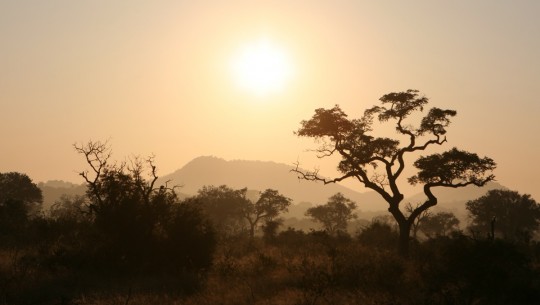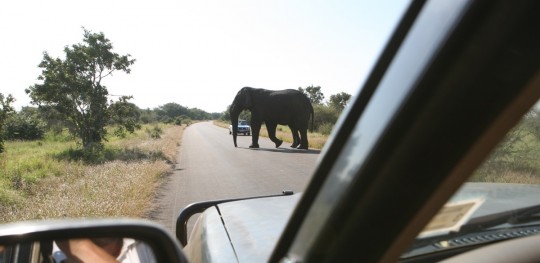
Another early start the following day allows me to see more wildlife. The sun raise early at around 6 a.m., and soon enough, temperatures and humidity are at the highest. Most days, the temperature is more than 30 degrees C.
After riding dirt roads for the first two hours of the day, I am out of the Saint Lucia Wetlands Park, due west in order to avoid Swaziland. My passport is almost full, and until I get another one – probably in Tanzania – I need to avoid too much border crossings.
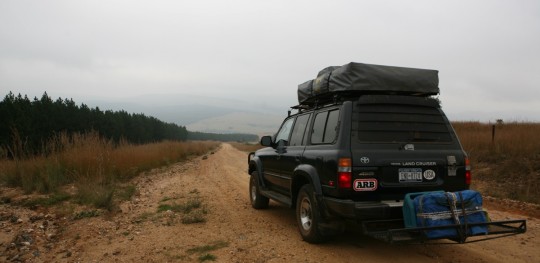
As I go north following the Swazi border, I gain in elevation, and soon enough, I am deep into huge forests of pines. Eventually, I stop in Amsterdam for the night, where a white farmer let me camp on his land.
Towns up there are simple, but you can feel the timber trade put a little bit of extra money in pockets, compared to other places I crossed.
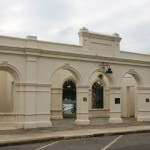
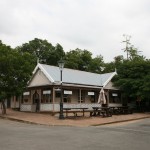
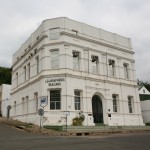
I leave in the morning, and use dirt roads through the forest to reach Barberton, a city of historical interest. Of commercial interest as well, for me, since I need to get a bit of groceries, to cover for my needs while I will be traveling for few days through Kruger National Park. When it is done, I visit the town, and discover the history of this old gold mine site. Some preserved Victorian homes as well as elegant buildings make the place an interesting stop. Sights include the De Kaap Stock Exchange building, built in 1887 site of the first gold exchange in South Africa. In the same street, the Globe Tavern and the Lewis and Marks building are from the same period.
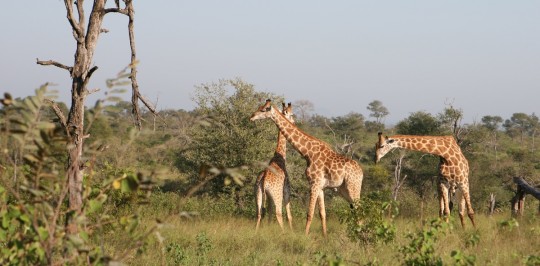
I have lunch there, and get back in the truck to drive a bit more and reach the park gate at the end of the afternoon. At the Malelane gate, a hotel let me camp in the backyard for US$13.
At 5:30 a.m., monkeys can witness once again a French guy coming out of his tent, tired but excited about seeing more of Africa. Extended time in Buenos Aires, Johannesburg and Durban reinforce my pleasure of being out camping.
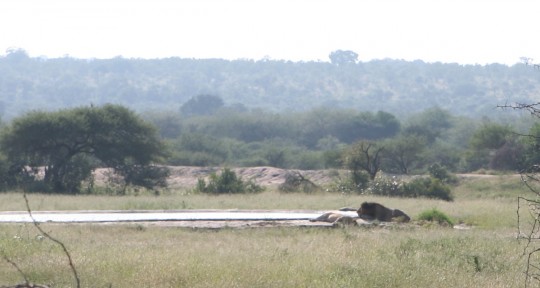
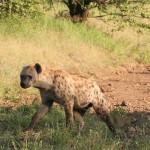
For around US$ 40, I can enter the park, and pretty soon, I see many animals, including giraffes.
I spend the day driving north across the park, and find a small rustic camp where electric wires protect travelers from omnipresent hyenas. It cost me US$10 to stay here for the night and have a nice bush camping experience.

After a night in the camp called Balule, I get again an early start to see hippos, zebras, elephants and hundred of antelopes.
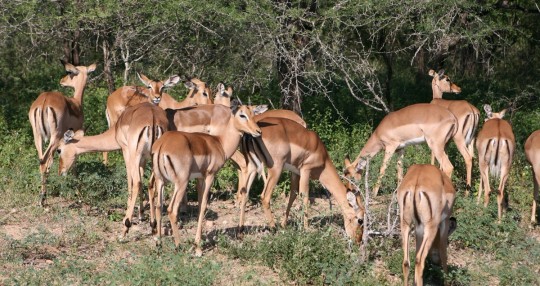
The most impressive of course are elephants. You can really see a lot of them here.

Around 11 a.m., I go east and after an hour, I reach the border with Mozambique. This is a straight forward affair, since there are not many people crossing at this location. The visa cost me US$25.
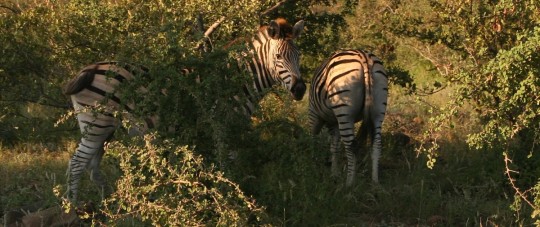
Once I pass the border, I find myself in the Limpopo Park, the equivalent of Kruger on the Mozambique side, and have to pay US$10 to cross it. It is done in two hours of dirt roads, which become a badly potholed tar road.
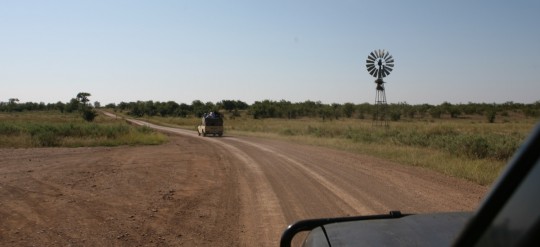
After hours of driving, and after dark, I am back on the Indian Ocean coast, looking for a camp ground. I find one on the beach in Xai-Xai, where I am happy to stop, exhausted by the long drive (US$ 8.50).
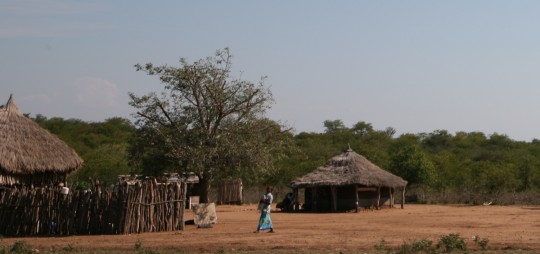
Mozambique is still recovering from a traumatic past. Formerly a Portuguese colony, the country went through a war of independence, and a civil war ending in 1992. Natural disasters also took a toll on the inhabitants.
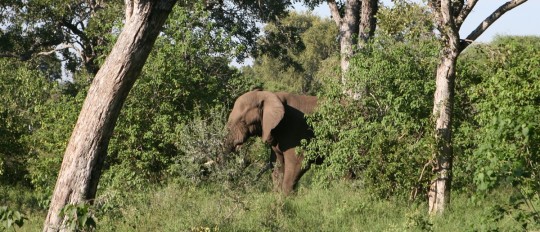 Infrastructures are in bad shape, even so the country seems to be on the rise, and gets a bit more tourists every year. It should be an interesting trip of around 2,000 miles across the country. As previously thought, it looks like finding spots for camping will be harder in Africa compared to Latin America. I stick to camp grounds at this point, and will see how things change while I am going north.
Infrastructures are in bad shape, even so the country seems to be on the rise, and gets a bit more tourists every year. It should be an interesting trip of around 2,000 miles across the country. As previously thought, it looks like finding spots for camping will be harder in Africa compared to Latin America. I stick to camp grounds at this point, and will see how things change while I am going north.
